
Mariahilf is the 6th municipal district of Vienna, Austria. It is near the center of Vienna and was established as a district in 1850. Mariahilf is a heavily populated urban area with many residential buildings. It has a population of 31,621 within an area of 1.48 square kilometres (0.6 sq mi).

Michael Häupl served as mayor and governor of Vienna from 7 November 1994 until 24 May 2018. He is a member of the Social Democratic Party of Austria.
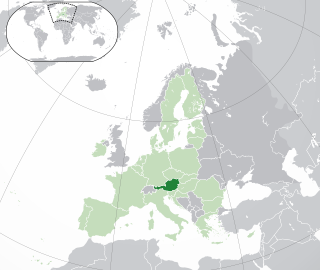
Lesbian, gay, bisexual, and transgender (LGBT) rights in Austria have advanced significantly in the 21st century. Both male and female same-sex sexual activity are legal in Austria. Registered partnerships were introduced in 2010, giving same-sex couples some of the rights of marriage. Stepchild adoption was legalised in 2013, while full joint adoption was legalised by the Constitutional Court of Austria in January 2015. On 5 December 2017, the Austrian Constitutional Court decided to legalise same-sex marriage, and the ruling went into effect on 1 January 2019.
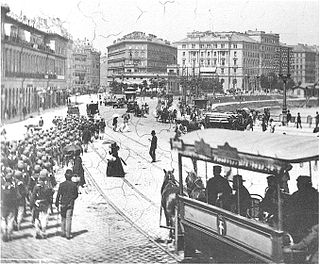
Hotel Metropole was a hotel in Vienna, Austria that was constructed in 1871–73. It was destroyed during World War II after serving as the Vienna headquarters of the Gestapo from 1938. The address was Morzinplatz, in the I. District Innere Stadt.

Ballhausplatz is a square in central Vienna containing the building that for over two hundred years has been the official residence of the most senior Austrian Cabinet Minister, the State Chancellor, today the Chancellor of Austria. As a result, Ballhausplatz is often used as shorthand for the Austrian Federal Chancellery. Until 1918 the Foreign Ministry of Austria-Hungary was also housed here. Similar to Downing Street or the Hotel Matignon, the word Ballhausplatz is a synecdoche for the seat of power.
Same-sex marriage in Austria has been legal since 1 January 2019. On 4 December 2017, the Constitutional Court ruled that the non-discrimination and equality provisions of the Constitution of Austria guarantee same-sex couples the right to marry. The decision took effect on 1 January 2019.

The Judenplatz Holocaust Memorial also known as the Nameless Library stands in Judenplatz in the first district of Vienna. It is the central memorial for the Austrian victims of the Holocaust and was designed by British artist Rachel Whiteread.

Legislative elections were held in Austria on 28 September 2008 to elect the 24th National Council, the lower house of Austria's bicameral parliament. The snap election was called after Austrian People's Party (ÖVP) withdrew from the ruling grand coalition with the Social Democratic Party of Austria (SPÖ) in July. Due to dissatisfaction with the governing parties, the opposition and minor parties were expected to make significant gains. Opinion polling indicated that up to seven parties could potentially win seats.
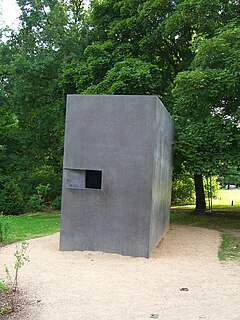
The Memorial to Homosexuals persecuted under Nazism in Berlin was opened on 27 May 2008.
The political parties used numerous campaign posters in the 2008 Austrian legislative election.

Legislative elections were held in Austria on 29 September 2013 to elect the 25th National Council, the lower house of Austria's bicameral parliament.

The Social Democratic Party of Austria, founded and known as the Social Democratic Workers' Party of Austria until 1945 and later the Socialist Party of Austria until 1991, is a social-democratic and pro-European political party in Austria. Founded in 1889, it is the oldest extant political party in Austria. Along with the Austrian People's Party (ÖVP), it is one of the country's two traditional major parties.
Hans Tietze was an Austrian art historian and member of the Vienna School of Art History.
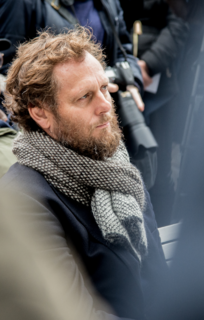
Olaf Nicolai is a German conceptual artist.

Legislative elections were held in Austria on 29 September 2019 to elect the 27th National Council, the lower house of Austria's bicameral parliament. The snap election was called in the wake of the Ibiza affair in May, which caused the resignation of Vice Chancellor Heinz-Christian Strache and the collapse of the governing coalition of the Austrian People's Party (ÖVP) and Freedom Party of Austria (FPÖ). The government subsequently lost a motion of no confidence in parliament, and ÖVP Chancellor Sebastian Kurz was replaced by non-partisan Brigitte Bierlein on an interim basis.
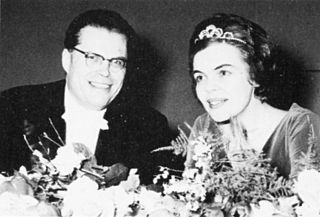
Erik Werba was an Austrian classical pianist who is especially known as an accompanist of singers. He was also a music critic, conductor, composer, author and academic teacher.

The Vienna City Memorial is a memorial located at the Vienna Central Cemetery and dedicated to "the victims for a free Austria 1934–1945". It was donated by the City of Vienna, designed by Fritz Cremer, Wilhelm Schütte and Margarete Schütte-Lihotzky and handed over to the public by Mayor Theodor Körner on 1 November 1948.

The memorial against war and fascism is a work by the Austrian sculptor Alfred Hrdlicka. It has been standing since 1988 on the Albertinaplatz in Vienna – named after Helmut Zilk in 2009 – opposite the Palais Archduke Albrecht and the back of the Vienna State Opera. As a walk-in monument, it is intended to serve as a reminder of the darkest epoch in Austrian history. It is dedicated to all victims of war and fascism.

Klimt Villa is a building located in the Hietzing district of Vienna built in the early 1920s upon the last Viennese studio of the painter Gustav Klimt.




















